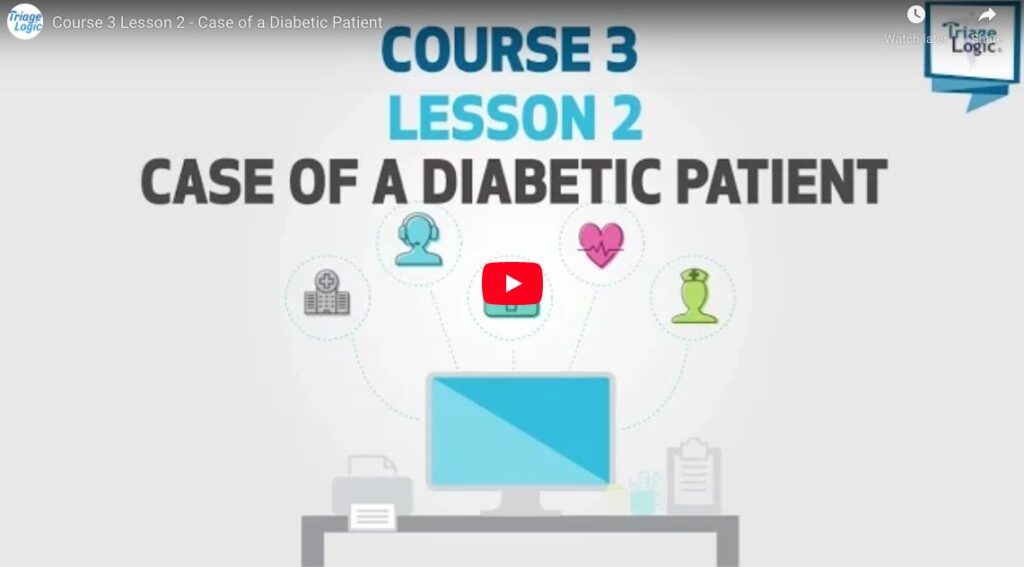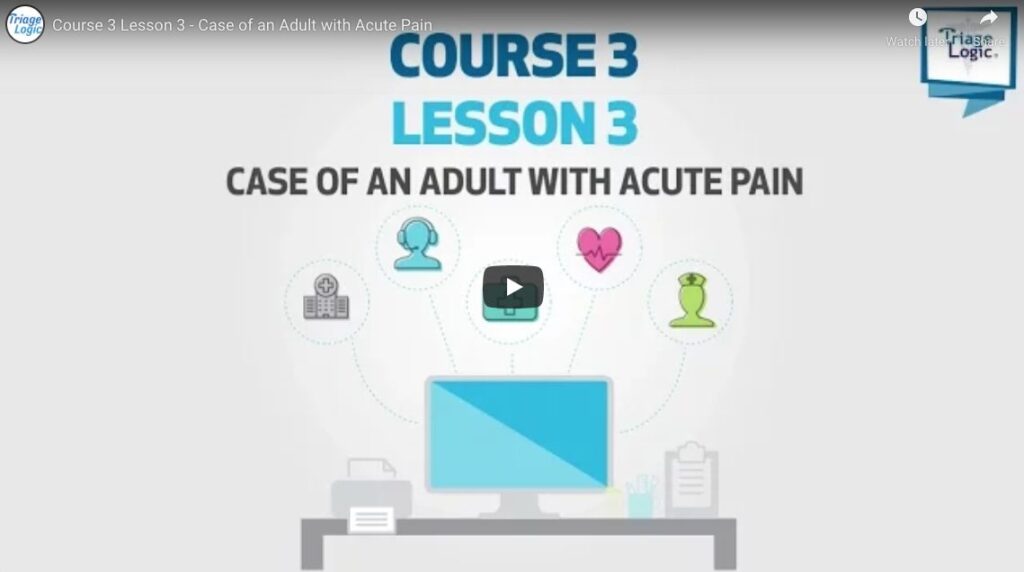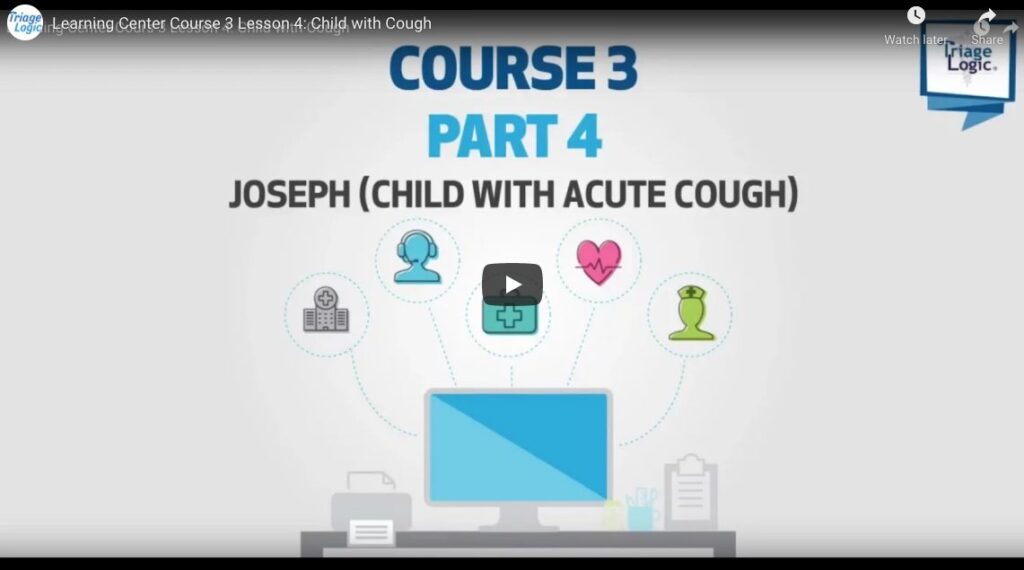
Course 3: Case Studies and Scenarios in Nurse Triage
In this lesson, we discuss what Telephone Triage Nurses should be thinking about when presented with caller symptoms. That includes keeping these three questions in mind:
“What is the most critical issue that could be happening?”
“What is the most common issue that could be happening?”
“What is the most treatable issue that could be happening?”
Here are some examples of presenting symptoms and the critical issues that need to be considered:
Neurological – could mean a brain hemorrhage, stroke, or head injury.
Endocrine – could mean diabetes, thyroid storm, or adrenal disease.
Cardiac – could mean a heart attack or aortic aneurysm.
Orthopedic – could mean a deformity from a fall, a limp, or abuse.
Respiratory – could mean heart failure, asthma, COPD, or a pulmonary embolism.
Gastrointestinal – could mean an obstruction of the bowel, problem with the appendix, or GI bleed.
OB/GYN – could mean an atopic pregnancy, preterm labor, decreased fetal movement, undetected abortion, or preeclampsia.
Newborn fever – could mean sepsis or hypothermia.
Dermatology – could mean sepsis (in children), strep rash, or necrosis.
Psychological – could mean suicidal thoughts, abuse, or a manic episode.
Triage nurses don’t use these critical issues to diagnose patients, but to advise patients on where to go for the proper level of care.
View our entire Learning Center Catalogue at https://triagelogic.com/learn/
TriageLogic is a URAC-accredited, physician-led provider of top-quality nurse telehealth technology, remote patient monitoring, and medical call center solutions, all for the purpose of encouraging positive patient behavior and improving access to healthcare. Founded in 2007, the TriageLogic Group now serves more than 9,000 physicians and covers over 25 million lives nationwide. They continue to partner with private practices, hospitals, and corporations throughout the U.S.
Supplemental Reading Material





